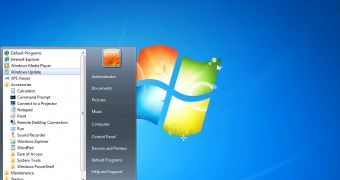The latest release of Windows 7 which hit general availability in July 2011, comes with application usage restrictions that customers need to be aware of.
Windows Thin PC, or WinTPC for short, is the evolution of Windows Fundamentals for Legacy PCs, and as mentioned in the title, based on the Windows 7 core.
According to Microsoft, WinTPC is designed as an OS for customers looking to repurpose their PCs as thin clients, requiring just a 1GHz processor, 1GB RAM and 16GB hard disk space to run.
I recently had a conversation with a friend who asked me whether he could run Windows Thin PC on a productivity machine as his main OS. I said no.
One of the reasons is the fact that WinTPC’s license is restrictive when it comes down to the types of apps that customers can deploy and use.
“You can run applications that fall into one of the following categories: security, management, terminal emulation, remote desktop and similar technologies, web browser, media player, instant messaging client, document viewers, .NET Framework and Java Virtual Machine.
“However, you cannot run any productivity applications, such as Microsoft Office or similar applications,” reads an excerpt from the FAQ accompanying Windows Thin PC.
Users need to keep in mind that WinTPC is designed as a thin client OS, tailored to computers sporting dedicated thin client hardware, and not a fully-fledged platform such as Windows 7, even though core elements are shared between the two operating systems.
“Windows Thin PC is a modified version of Windows 7 (built from a Windows Embedded Standard 7 base) that is available as a Software Assurance benefit (for anyone with Software Assurance on their desktop operating systems). It has a reduced footprint (1.1GB compressed WIM, under 5GB when expanded on disk), and as a result has lighter hardware requirements,” noted Microsoft’s Michael Niehaus.
Windows Thin PC (WinTPC) Trial is available for download here.

 14 DAY TRIAL //
14 DAY TRIAL //